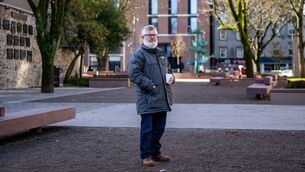La Palma an island steeped in history
Out over the sea, the prospect is clearer, lit by a weak sun, a pellucid grey light filtered through low cloud, with areas of blue sky.
Far beyond the horizon lies the Caribbean and the Americas. This was the island from which the Spanish caravelles set out on exploration, followed by warships carrying troops to conquer, and settlers to colonise, the peoples and lands of the New World, which, of course, the conquistadors claimed to be theirs.
They sailed south down the mighty river Guadalquivir from Seville to Los Palos and set sail for the Canaries. Having re-provisioned there, they caught the trade winds that blew them straight to Santo Domingo, Cuba, Mexico, Central America and beyond.
It was to La Palma that the galleons loaded with Aztec and Inca gold and jewels first returned, fat with the rapaciously-won loot of kingdoms unknown to Europe until a century before. Although Columbus made La Gomera his re-provisioning island (this because of an affair with Beatriz de Bobadilla, black widow of the island’s Spanish overlord) La Palma was the undisputed hub of the Adelantados, ‘the forward goers, those that advanced’.
Almost a century before the conquest of the Canary Islands had begun, the northern islands of Lanzarote and Fuerteventura proving relatively easy but the southern islands, Gran Canaria, Tenerife, La Gomera and La Palma were no easy battle with their mighty peaks rising from ravines so deep they saw the sun only when it was directly overhead, near-vertical slopes challenging the Spanish soldiers caparisoned with armour, helmets and weaponry, chasing the nimble Guanche natives, wearing nothing but goat-skin loin-cloths and familiar with every gulch, arroyo, canyon and cave.
Now there are fine paths, created over centuries and wonderful for hikers, first made to take out the sugar cane grown in river valleys and plateaus on mule back. Later, tobacco became the cash crop, then tomatoes, with silkworm silk, locally produced, and then, as now, bananas.
Banana plantations cover all the flat coastal land and many mountains terraces of La Palma with unbroken swathes of green. Canarian bananas are, as I have mentioned before in this column, far tastier than bananas from South America. Here they get less rain, and the taste is, thus, more concentrated.
Since I began this column, the grey gauze of misty rain has cleared and the sunlit is slowly strengthening. The colours of the village below, the whites, terracotta-reds, ambers and gorgeous pinks, stand out, and the sea is blue. Since arriving five days ago, there has been no opportunity for a swim. The beaches look especially uninviting; black sand does not look its best under a downpour. The weather in Ireland has apparently been better. The Azores region of high pressures, I read, moved north in November to favour Ireland and Britain, and the sun-blest Canaries have been anything but. However, the sun is forecast to return in three days. Then, we can complain about the heat!
Meanwhile, the mountains are awesome in their majesty, wreathed in cloud. Yesterday, at some 1,700 metres above sea level, (I drove up, and then walked) I saw choughs, like those on West Cork’s Seven Heads, jet black and shiny, with red beaks and red legs, tumbling and soaring in a ravine below me. Then, closer, a pair alighted on some cactus and began to forage. I wondered if they were feeding on cochineal, small black grubs, like woodlice but soft, that were once harvested for their wine-red edible dye used for colouring confectionery, and dying fabrics. Choughs’ beaks are bright red — were the beaks of La Palma choughs even redder from cochineal?
In the old district of Santa Cruz de La Palma, the capital, the main street and most beautiful thoroughfare is called Calle O’Daly, honouring Dionisio O’Daly, an Irish merchant who here, in 1773, initiated the first free public elections in Spanish history of local administrators, this later leading to the emergence of a democratic state. Don Dionisio was also responsible for the opening of the first state sponsored school in the Canaries.













